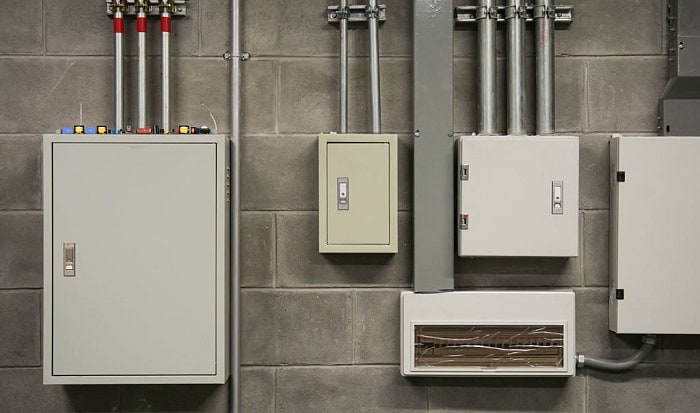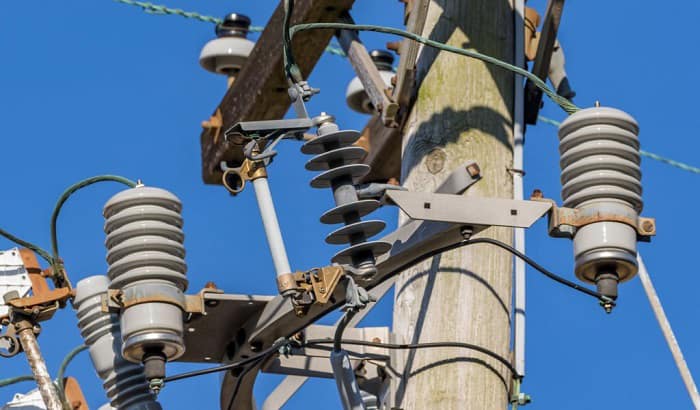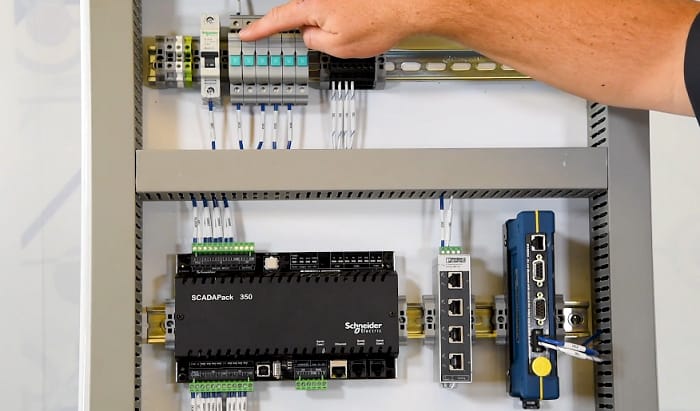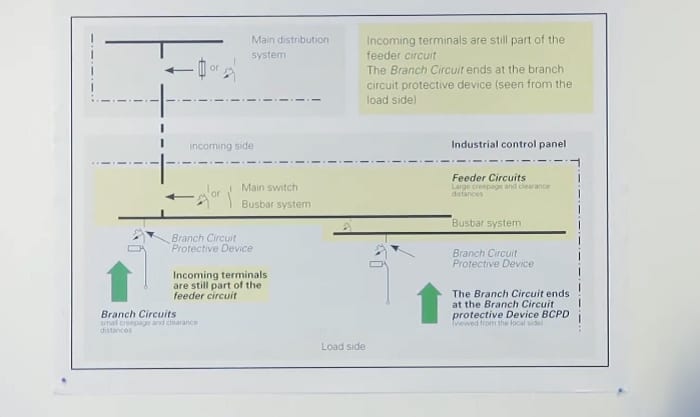Electrical feeders are one way to properly distribute electricity within large establishments or to multiple detached locations. Buildings need to determine the proper feeder wires since they have a sizable electrical consumption, and they need future-proof electrical installations.
Still, feeder lines in houses are rare, and they might be mistaken for an electrical branch circuit. Nevertheless, if you need to install a subpanel in a different location in your home, you should know the difference between a feeder vs branch circuit.
Table of Contents
What is an Electrical Feeder Circuit?
The 2020 edition of NFPA 70 gives the definition of a feeder as all the circuit conductors between the supply source or the service equipment and the final branch-circuit overcurrent appliances.
In distribution system the feeder in substation is the wire that connects to the distribution transformer. However, the answer to “what is a feeder circuit?” in this article is focused on conductors that run after a service connection.
An example of a feeder is the conductor that connects the central panel of a unit to a subpanel. The main panel serves as the source, while the subpanel is the final overcurrent device.
What is a Branch Circuit?
The NEC article 100 defines a branch circuit as the circuit conductors between the final overcurrent device and the receptacles or outlets. Branch circuits are the conductors where appliances or light fixtures connect to the grid.
Branch circuits are those conductors that connect from the subpanel to the receptacle, where our subpanel serves as the final overcurrent device.
Branch circuits may also start from the main panel to a receptacle, and the main panel becomes the final overcurrent device for that outlet.
Feeder Conduit and a Branch Conduit: What is the Difference?
Branch circuits and feeder circuits have other differences. Still, generally, the difference lies in the actual thickness of the wires needed and the way to determine the wire thickness.
1. Feeder conductors are thicker than branch circuit conductors.
Feeders will have larger current flows compared to those that run a branch circuit so that feeder wires can “feed” branch circuits down the line (this can be seen in a branch circuit single line diagram).
- Thus, feeder conductors may use 4-gauge copper wires for a 100-A service based on the NEC feeder wire size, and higher requirements may need thicker wires
- Branch circuits use from 14-gauge to 6-gauge wire.
2. Determining wire thickness is more straightforward for branch circuits than feeders.
- For branch circuits, the required wire thickness can easily be checked in the NEC because branch circuits generally have well-written load limits.
For example, branch circuits for lighting units with a rating of 15-A limit shall use at least a 14-gauge wire, which is explicitly stated in the NEC.
- The feeder line electrical wire thickness, however, is not straightforward and will heavily rely on calculating the total load that will connect to the feeder.
NEC Article 250 states that a feeder must be able to supply a current of at least 125% of the continuous load plus 100% of the non-continuous load.
Thus, to know the right feeder line, the branch circuit ratings that tap into the feeder line must be identified first. A certified electrician is recommended to handle and service feeder lines.
Frequently asked questions
Can you run branch circuits with feeders?
For the branch circuit vs feeder, you can run them in the same raceway. However, they cannot run along the same raceway with service lines.
My receptacle has GFCI on it. Is it considered a final overcurrent device, and does it make the line connecting this receptacle a feeder line?
The GFCI (ground-fault circuit interrupter) on a receptacle is NOT considered a final overcurrent device for feeders. The GFCI as well as other fuses in equipment are simply additional protective devices meant to protect users and equipment.
An overcurrent device protects the circuit by preventing a surge of current through the wires that may cause a fire. Still, it does not protect the user or the equipment from electrical fluctuations.
Related: GFCI Receptacle vs GFCI Circuit Breaker – What is the Difference?
What are the limits for a feeder line?
Generally, the feeder line must have a current rating of at least 125% of the continuous load plus 100% of the non-continuous load. Except if the overcurrent protection device and the feeder are rated for 100% use for continuous loads.
My house does not have a subpanel. Does my electrical system still have a feeder?
A lot of houses do not need feeders, especially if their main panels can handle all their loads accordingly. Feeders are common in larger infrastructure or areas with multiple detached locations.
Conclusion
Differentiating a feeder vs branch circuit is one way to ensure the safe delivery of electricity to our homes.
As feeders need other requirements to comply with compared to branch circuits and are quite common in buildings, planning the feeder along with the final overcurrent protection device will help prepare anyone interested to take on a project.
Just remember to consult a certified electrician for the project or hire an electrician to do the job for you.
Before you go, please take a look at our comparison article:

I am Edwin Jones, in charge of designing content for Galvinpower. I aspire to use my experiences in marketing to create reliable and necessary information to help our readers. It has been fun to work with Andrew and apply his incredible knowledge to our content.




